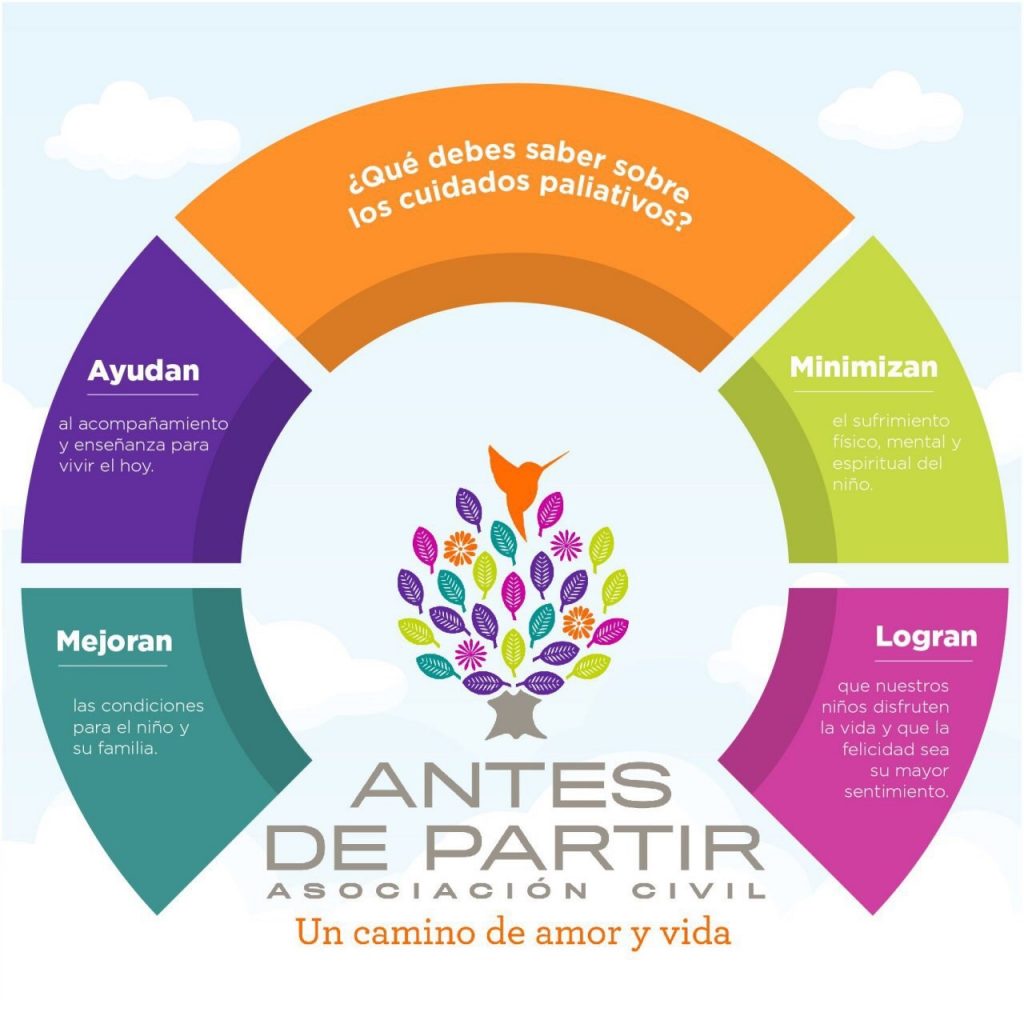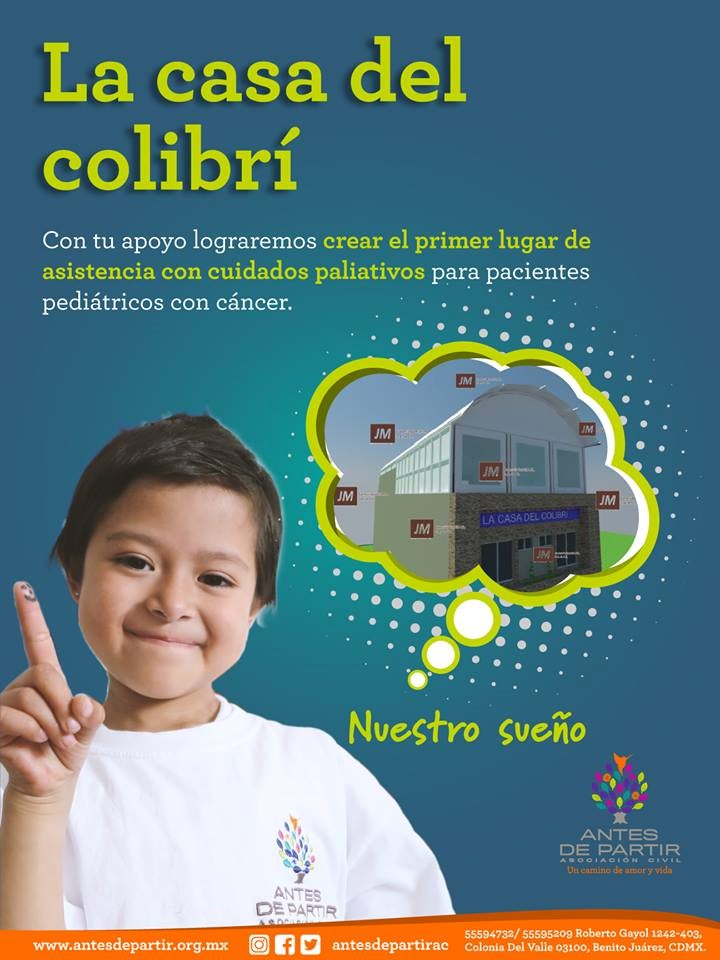The World Health Organization describe palliative care as “ a way to improve the quality of life of the patients and their families, those who are facing problems associated with an illness that threatens their life, through the prevention and control of suffering by an early identification, an impeccable evaluation and the treatment of pain and other physical, psychological and spiritual problems.”
What palliative care services intend is that patients spend their last days of life, being conscious and free of pain, with the symptoms of their illness in control, so they can flow with dignity, at their homes or in a familiar environment, surrounded by the people that love them.
The Palliative Care Spanish Society (SECPAL) defined in 1993, the criteria of terminally ill people and are as follows:
It is important to explain that palliative care do not accelerate, nor stop the dying process. The goal is to accompany the patients and their families, by giving them specialized knowledge of medical and psychological care, looking to provide emotional and spiritual support to the patient during the terminal phase, in an environment that includes home, family and friends.
References:
1. Palliative Care. Recommendations Semfyc. Pages: 7, 15-17. Ed. Asta Medica.
2. Hernandez Peris M., Baixauli Rubio A. (1995). Practical guide of Palliative Care in Home Attention. SECPAL (Palliative Care Spanish Society)
References:
3. Palliative Care. Recommendations Semfyc. Pages: 7, 15-17. Ed. Asta Medica.
4. Hernandez Peris M., Baixauli Rubio A. (1995). Practical guide of Palliative Care in Home Attention.

It is estimated that pain is the main symptom in 40% of oncological patients during their treatment and in 75% when the disease has advanced.
Even so its presence is variable, and it depends on the type and spreading of the disease, as well as a personal tolerance to pain in each patient.
Therefore, pain relief and palliative care are imperative in the OMS world cancer program, emphasizing in the point that health systems should implement watchfulness programs on pain control.
Pain in an oncological patient can have different causes; in some cases it is due to the pressure caused by the growth of a tumor over tissues, bones, nerves and other organs of the body.
In other cases, it can be caused by the disease treatment itself. For example, when they have a surgery, radiotherapy or chemotherapy.
In many occasions there is also a pain that was present before the illness, such as osteoarthritis, headaches or lower back pain.
In either case, it is important to share this information with the doctors so they can manage pain in the best way possible.
Pain negatively affects the body functions, causing and intensifying sleep disorders, lack of appetite, limiting the ability to exercise, to have physical activity and social relationships. In summary, it reduces the quality of life.
On the other hand, the perception of pain can increase when the person is depressed or in an anxiety state, frequent situations when someone suffers from cancer.
Pain units such as oncology services have the means to avoid it. We don´t have to accept pain as something unavoidable.
To face oncological pain, it is necessary to be able to overtake a series of barriers that can complicate the ability to control pain in an optimal way.
Many times a patient doesn´t mention pain during a doctor´s appointment. On one hand, there is a belief that pain is a minor problem in relation to the oncological process. On the other hand, pain is related to a worsening of the illness. So, if we deny pain, we are denying that the disease is progressing. However, it doesn´t have to be this way, because the pain can be caused by the treatments used to treat the tumor.
Fear of becoming addicted or to lose control over oneself is a frequent concern. However, this should not be an obstacle for taking painkillers that are strong enough to lessen the pain. The fact is that it is highly unusual that someone creates an addiction to painkillers if you follow the doctor´s advice.
One of the most frequent fears is the belief that one should take painkillers only when they feel the pain, in order to avoid its tolerance, that is that painkillers will not have an effect when someone takes the same dosage every time. However, pain treatment is usually more effective when the medication is taken in regular intervals, weather there is pain or not. This way it can be prevented. On the other hand, if there is not a proper control of pain, event when the treatment is properly followed, it can be necessary to increase the dosages or to change the previous medication.
Every medicine can cause undesired side effects, and painkillers are not an exception. However, they can be almost totally prevented or avoid.
Choosing a treatment depends on the doctor. This decision is taken in an individualized way, having in mind the pain characteristics, such as its intensity and the exact moment of the illness. Treatment results are usually good, because 90 to 95% of people respond well to a drug treatment combined with a good oncological therapy. Only 10% of the patients need more aggressive measures but with very good results.
Non-steroidal anti-inflammatory drugs (NSAID´s) belong to this group. Among them, there is aceclofenac, diclofenac, ibuprofen, naproxen, piroxicam, ketorolac, salicylic acid and paracetamol. There are efficient in treating pain from minor to moderate, and can be used in combination with opioid painkillers and adjuvant drugs to treat moderate to intense pain.
Among this group we find the weak opioids such as tramadol or codeine and the stronger opioids such as morphine, fentanyl, buprenorphine, oxycodone, hydromorphone… The weaker opioids are used alone or combined with non-opioid painkillers to treat pain when the intensity is minor to moderate. When you don´t get enough relief with these weak opioids, stronger opioids are used. The main difference among the stronger opioids is that they don´t have a dosage restriction, so it could be raised according to the needs and tolerance of each patient.
Adjuvant drugs are medicines that are used in a complementary way to help the action of the painkillers. Among them there are the antidepressants and anticonvulsives, used to alleviate neuropathic pain, steroids for a pain caused by an inflammation or local anesthetics.
In these group there are the so-called infusion bombs that consist in painkiller administration, in a continuous way, through an IV. When the pain increases, the administered dosage can be raised, and in some cases the same patient can decide when to do it. These are the PCA bombs (patient-controlled analgesics)
Nerve block anesthesia is also part of this group, and it is when an anesthetic is directly injected to the nerve or around the spinal cord. This process should be repeated after some time, because the blocking is temporary. There is also the neurostimulation, in which some electrodes are placed over the patient. These electrodes are connected to a belt (TENS unit), or they can also be placed directly under the skin, as implants.
Besides the pharmacological treatments, one can also benefit from a combined non-pharmacological treatment. Among others, there are the relaxation technics that can reduce the tension in the body and relax the muscles. It also helps to sleep well and this is a complement to reduce pain. Physiotherapy can also be useful. Massages can relieve contractures and reduce anxiety. Applying hot or cold packs can help in diminishing the sensation of pain if its origin is either inflammatory or muscular. It is advised to consult professionals in this kind of treatments, because they know the best technic to apply in any case. You can also consider other complementary therapies such as acupuncture.
The painkillers used to treat pain can have side effects that depend on the type of analgesic. Always consult your physician if you have any reaction that seems to be odd. In the NSAID´s group, the most frequent is to have a stomach effect, such as pain, gastritis, gastrointestinal ulcer and in acute cases even a digestive hemorrhage.
To avoid or to minimize these effects your doctor can prescribe gastric protectors, which can be taken with food. These drugs can also cause coagulation problems, so if you are in an anticoagulant treatment, painkillers should be administered with precaution.
Regarding the opioid drugs, nausea and vomiting are frequent during the first days of the treatment. Administering the so-called antiemetic can prevent them.
Another side effect is drowsiness, which usually diminishes over time once the body is adapted to the medicine. If drowsiness persists, it may be necessary to lower the dosage of the opioid drug.
Last, constipation is a normal side effect of an opioid drug. To improve this condition is convenient to follow these recommendations: increase liquids consumption, take food that is high in fiber and exercise as much as it is possible. However, the physician usually prescribes a laxative for prevention.
Pain usually increases with anxiety and this affects the patient psychologically. This fact can alter the patient´s pain control, so it is important to dedicate time to improve your own emotional response, so we improve pain control. It is priority to look for psychological support, either with a psychologist, or by becoming part of a patient´s association or forum, which facilitate contact with people that are dealing or have dealt with a similar experience.
Sources:
Clinica Universidad de Navarra. Pain. Taken from Illnesses and treatments
Value scales of pain. Taken from the document value scales of pain.
Clínica Universidad de Navarra. Dolor. Taken from Illnesses and treatments
Value scales of pain. Taken from the document value scales of pain.
